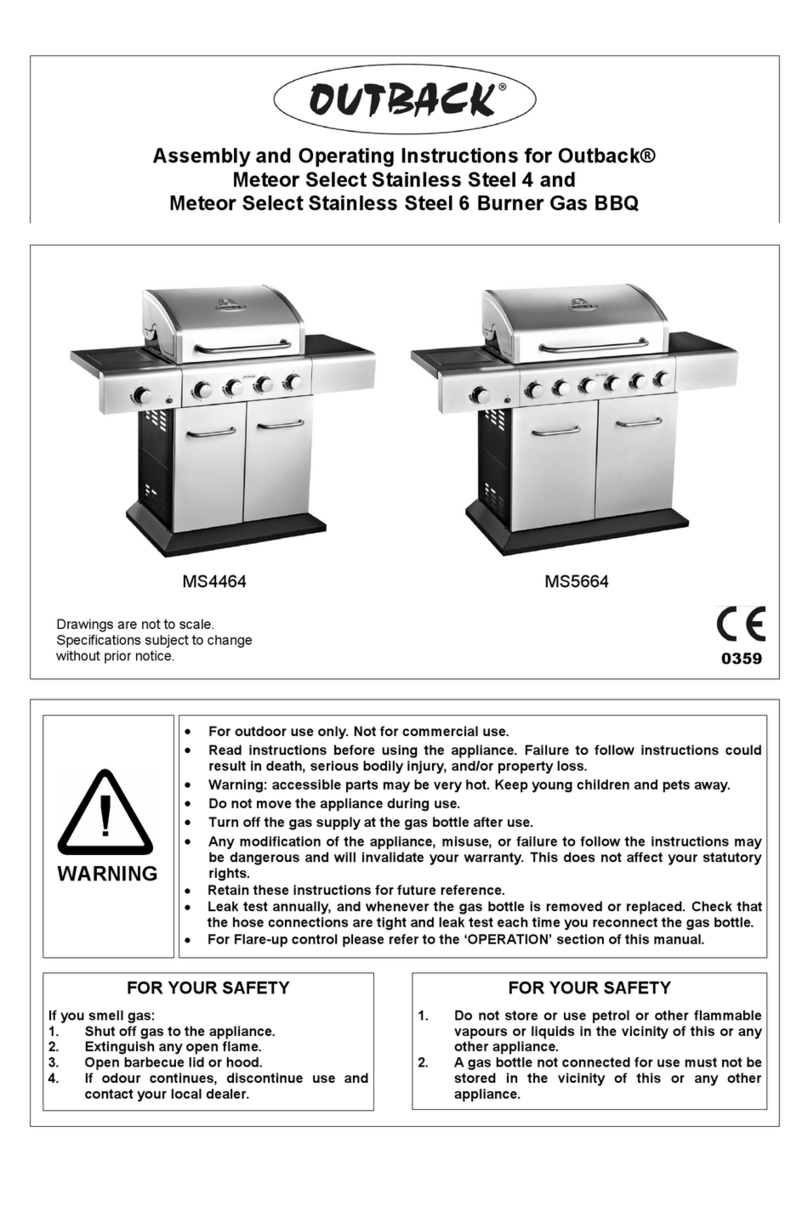Outback Hunter User manual
Other Outback Grill manuals
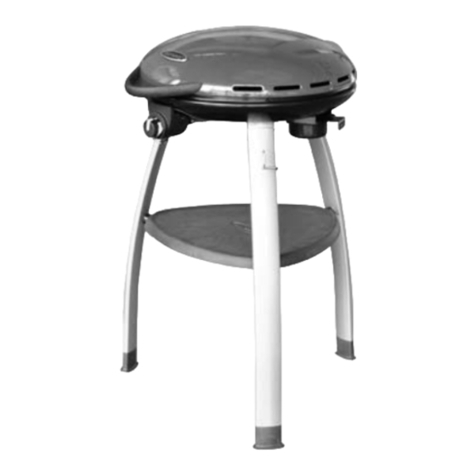
Outback
Outback Trekker RG47B User manual
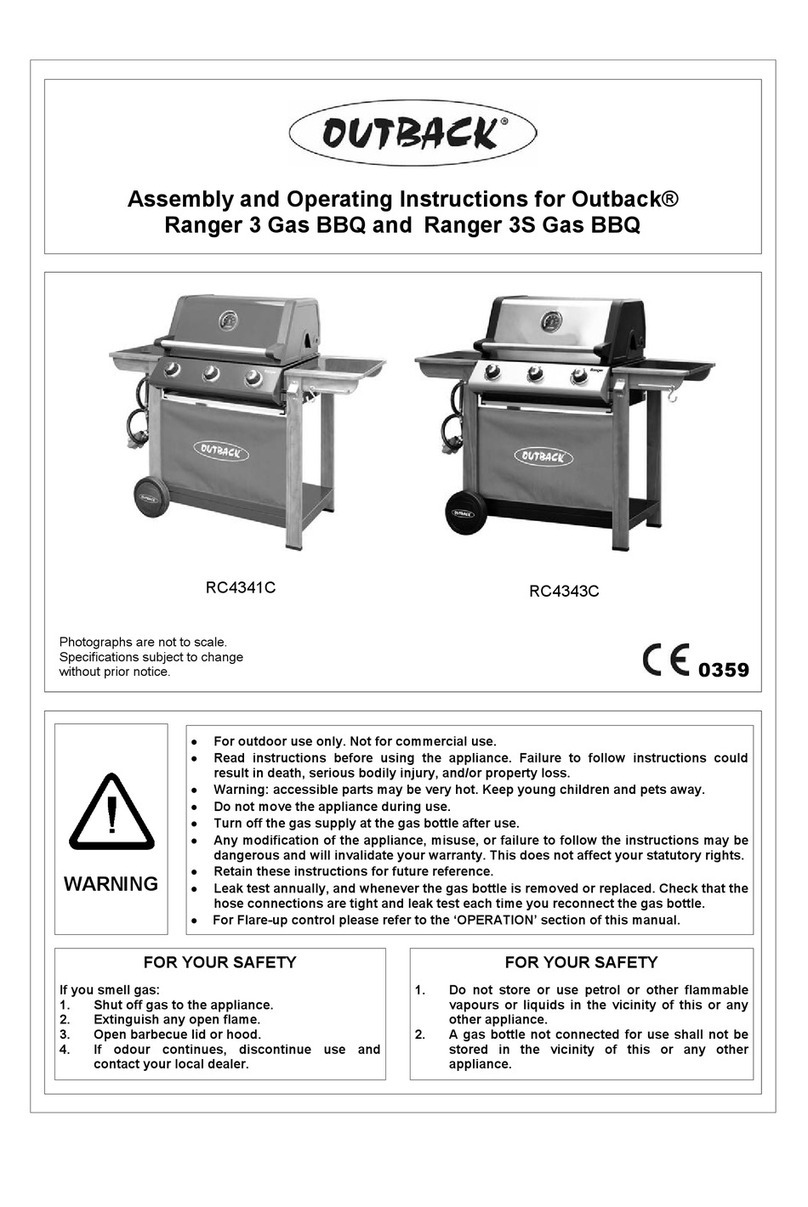
Outback
Outback RC4343C User manual
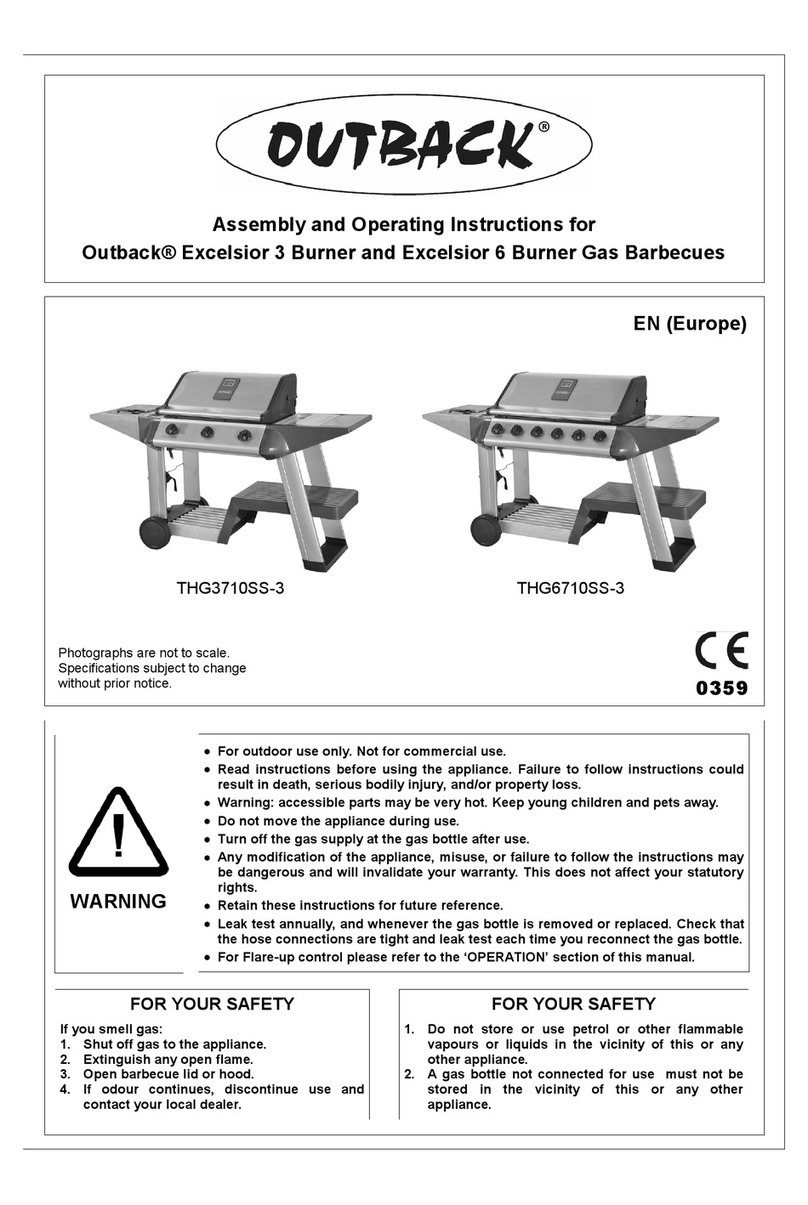
Outback
Outback THG3710SS-3 User manual
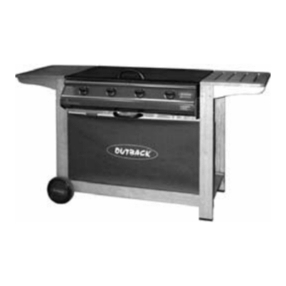
Outback
Outback Spectrum 2 Burner User manual

Outback
Outback Jupiter 4S User manual
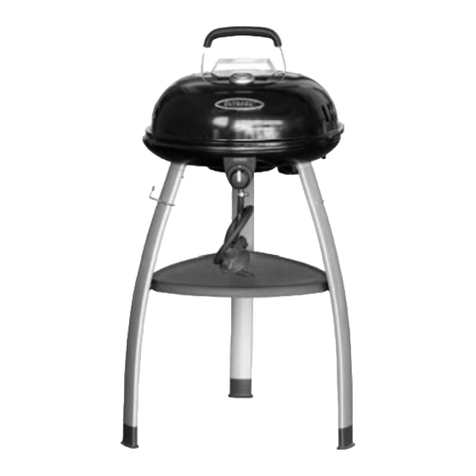
Outback
Outback Trekker User manual

Outback
Outback Charcoal Roaster 2000 User manual
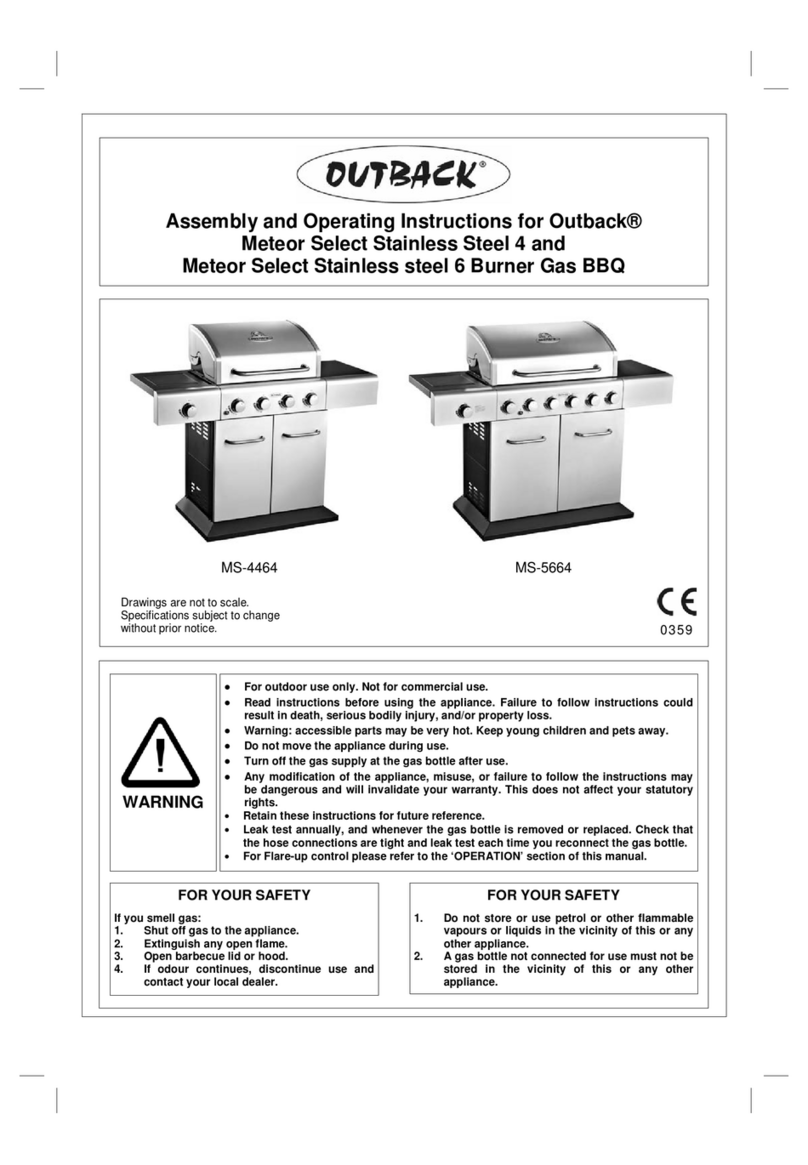
Outback
Outback MS4464 User manual

Outback
Outback THG3302PC User manual
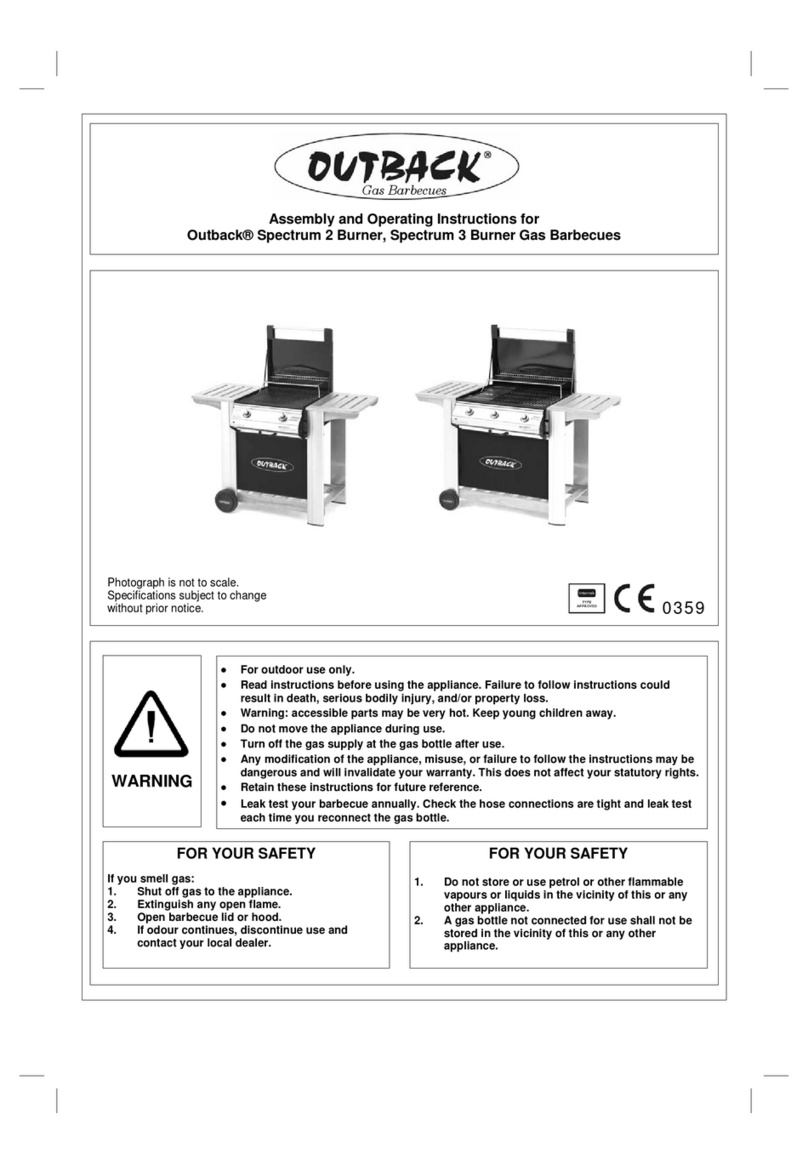
Outback
Outback Spectrum 2 Burner User manual

Outback
Outback Omega 100 User manual

Outback
Outback Diamond Hooded User manual
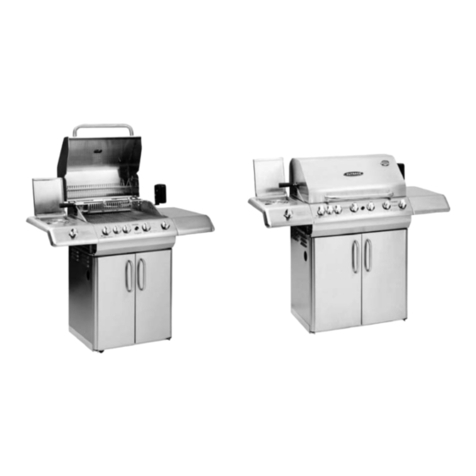
Outback
Outback Professional Range Pro 6 User manual

Outback
Outback THG3710SS-3 User manual

Outback
Outback RC4341PA User manual

Outback
Outback THG3302P User manual

Outback
Outback THG3302S-3 User manual
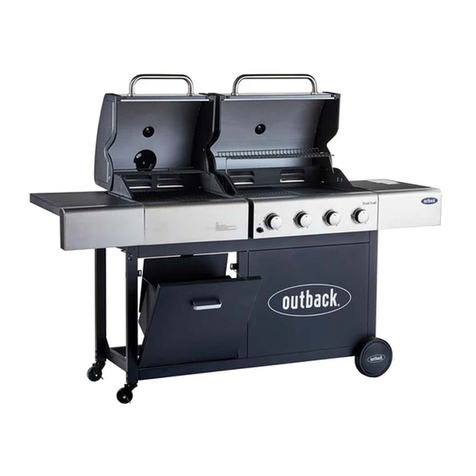
Outback
Outback CS3200 User manual

Outback
Outback Party Select 6 Burner Gas BBQ FS5680 User manual

Outback
Outback Spectrum 2 Burner User manual
Popular Grill manuals by other brands

Landmann
Landmann Avalon PTS Plus 5.1 Plus 12122 Assembly and operating manual

Kenyon
Kenyon B70200 owner's manual

Better Homes and Gardens
Better Homes and Gardens GBC1486W owner's manual

Orbegozo
Orbegozo GR 2300 instruction manual

bora
bora PT11 Operating and installation instructions

Klarstein
Klarstein 10031664 manual

Garland
Garland MWE3W Installation and operation manual

Char-Broil
Char-Broil 463722714 Product guide

MPM
MPM MOP-03 user manual

Kenmore
Kenmore 415.16123800 Use and care guide

Tucker Barbecues
Tucker Barbecues GTR Series Assembly, installation and operating instructions

Monogram
Monogram ZGG540NCP1SS owner's manual
